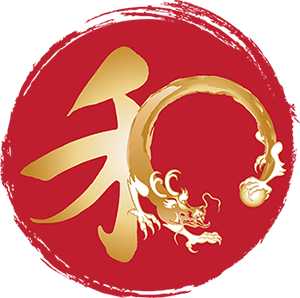READING TIME: 5 MINUTES.
The New Year, or O-Shogatsu in Japanese is Japan’s most important holiday that comes with its own customs and traditions. Many of these customs have Shinto, Buddhist, or even Feng Shui roots. They are all meant to ensure an auspicious start of the new year and usher health, success, and prosperity into your household. O-Shogatsu and the days before it is like one giant, complex ritual that every Japanese knows and engages in naturally and cheerfully. In this blog, I share about the flow of O-Shogatsu customs and traditions that make New Year’s in Japan so enjoyable and special.
Preparing for the New Year
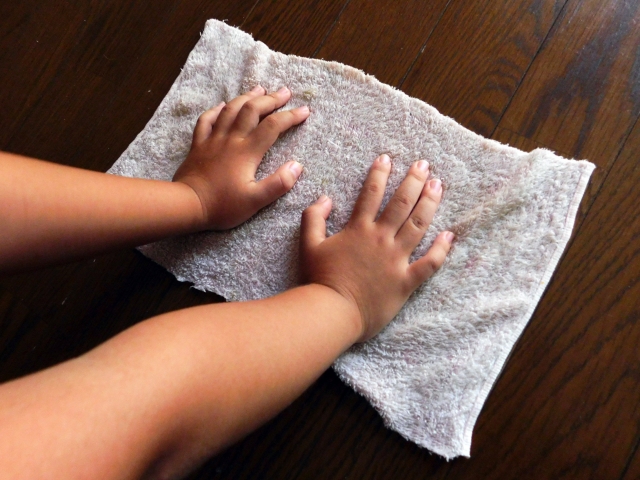
The last days of the old year are dedicated to oosoji, or a big clean up. To ensure that the new yearly cycle begins with clean, fresh energy the Japanese clean their homes and purge them of old or not needed items. Oosoji is often the way that schools and businesses break for the holidays. Employees clean their workspace and students clean their classrooms. Even kindergarteners helped by their parents participate in the clean up of the school. While cleaning may not be everyone’s favorite thing, having a clean, uncluttered house or workspace is something everyone enjoys.
Once the clean-up is done it is time to decorate. Each decoration has its purpose and carries special symbols meant to usher in good luck and prosperity.
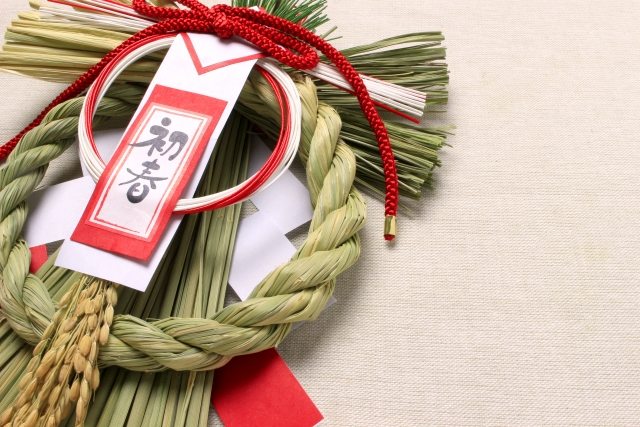
Walk by any home or business in Japan around the new year and you will see wreath-like braided rice straw decorations hanging on the front doors. These are called shime-nawa. Braided straw ropes are used to demarcate a sacred or purified space so shime-nawa is meant to keep your home safe. You will often see them hanging from the eaves of shrines or being wrapped around old trees together. Another part of the decoration is the zigzag-shaped shide paper streamers that are used in Shinto purification rituals.
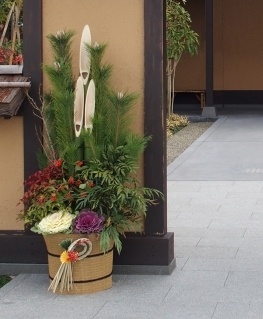
The entrance gates of houses and buildings are often decorated with kadomatsu (literally pine gate,) another traditional New year’s decoration made of pine branches and bamboo. The kadomatsu decoration consists of three bamboo shoots and pine branches. The pine symbolizes longevity and the bamboo is the symbol of growth. The three bamboo shoots also represent heaven, humanity, and earth. They are of different heights with heaven being the highest and earth the lowest. The kadomatsu is traditionally kept by the building’s entrance till the end of the New Near’s celebrations. Once these are over, it is taken to the shrine and together with all other decorations, is burned there.
Ring out the old attachments, bring in new energy ~
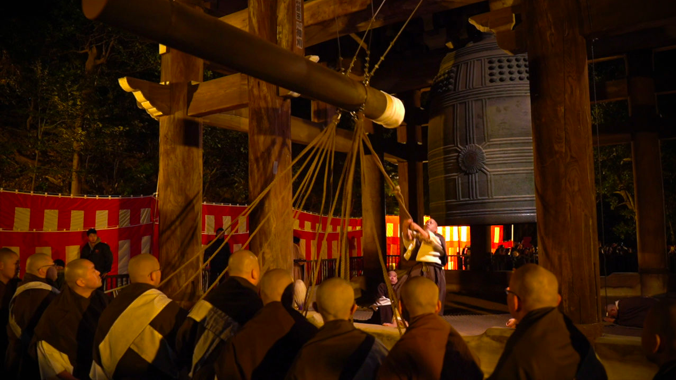
Before midnight on December 31 temples all over Japan ring their bells 108 times which, according to Buddhist tradition is the number of human attachments. Again according to Buddhist teachings, it is our attachments that create all suffering. The Japanese believe that this ringing of the bell will free them of the attachments and temptations of the previous year so they can begin the new year with a clean slate. In many temples, people line up to have a go at the ringing of the bell which is a light, lively event. The last bell ring is timed to match with midnight and signals the end of the old year and the beginning of the new one. Then the bells begin to ring again, this time ringing in the 108 human virtues so we all have a year that is strong and fulfilling.
It’s time to celebrate ~
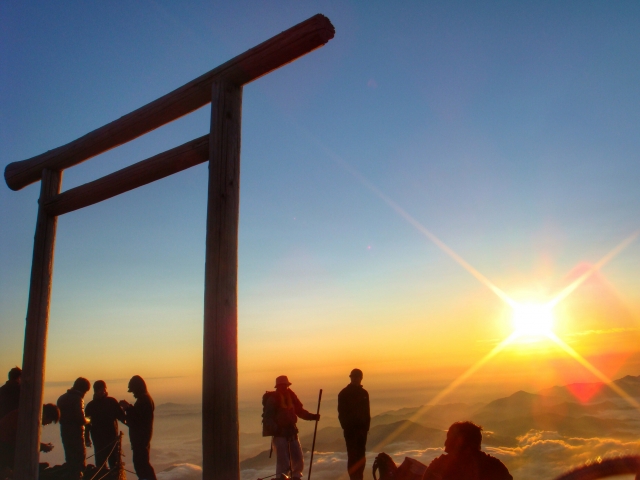
Different from what is typical in western cultures where the big celebration is on New Year’s Eve, in Japan celebration begins on the 1st of January. Many people wake up early and go out in the chilly dawn to see the first sunrise of the year. The best experience and a dream of a lifetime for many, is to meet the first Sun of the year on the top of Mt. Fuji. However, to do that you need to be fit because the mountain is almost 4,000 meters high (about 10,000 ft.) For those brave souls who are not afraid to face the elements and do the climb in total darkness, the reward is a breathtaking view of the sun rising over the sea clouds and lighting up the mountain and world below it. It is a truly magical experience.
Those of us who are unable to do the climb can still have a beautiful experience. In my family, we go to a bridge over the Tama river near our home where we wait for the sun to rise over the hills in the distance. Every year there are many people on the bridge, not only neighbors but judging from the many parked cars also people who have come from far away. There is a great feeling of ‘togetherness’ in sharing that moment which is a wonderful way to begin the new year.
Nengajo – New Year’s greeting cards
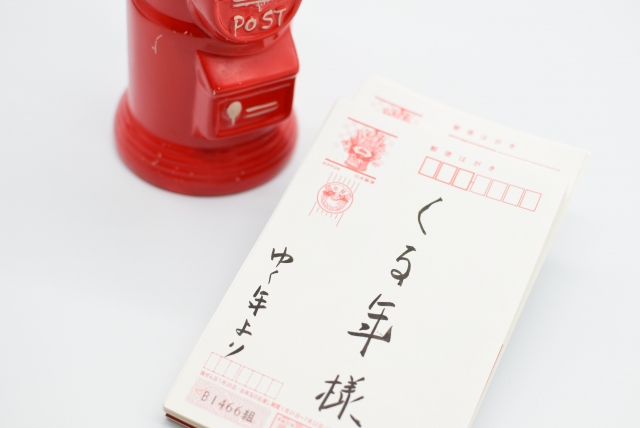 We can’t talk about O-Shogatsu without mentioning nengajo, the special New Year’s greeting cards. These cards are sent to family, friends, and colleagues to express your gratitude for their help throughout the year. Nengajo can be purchased with a holiday greeting relative to the particular year already printed on them. However, most people prefer to get blank ones and create their own designs using family photos, premade software templates, or in the past stamps. The post office begins accepting nengajo in early December, giving each a special mark to ensure it will be delivered promptly on New Year’s Day. Waiting for your bundle of postal love (they literally arrive bound together) and wading through the flood of New Year’s wishes on the first day of the year is a cherished holiday tradition similar to anticipating and opening presents. Each nengajo comes with a lottery number so each card you send or that you receive is a chance to win a prize.
We can’t talk about O-Shogatsu without mentioning nengajo, the special New Year’s greeting cards. These cards are sent to family, friends, and colleagues to express your gratitude for their help throughout the year. Nengajo can be purchased with a holiday greeting relative to the particular year already printed on them. However, most people prefer to get blank ones and create their own designs using family photos, premade software templates, or in the past stamps. The post office begins accepting nengajo in early December, giving each a special mark to ensure it will be delivered promptly on New Year’s Day. Waiting for your bundle of postal love (they literally arrive bound together) and wading through the flood of New Year’s wishes on the first day of the year is a cherished holiday tradition similar to anticipating and opening presents. Each nengajo comes with a lottery number so each card you send or that you receive is a chance to win a prize.
Osechi-ryori, the New Year’s feast
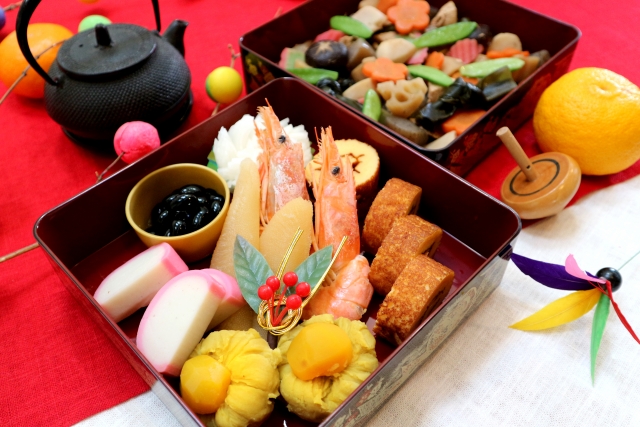 The food for the New Year’s feast, called osechi-ryori is prepared in the days before the new year. The reasons behind this custom are two: first, to give everyone time to rest and enjoy the holidays but also to not disturb the gods with the commotion of cooking.
The food for the New Year’s feast, called osechi-ryori is prepared in the days before the new year. The reasons behind this custom are two: first, to give everyone time to rest and enjoy the holidays but also to not disturb the gods with the commotion of cooking.
Osechi-ryori is meant to be a feast not only for the taste buds but also for the eyes: the traditional new year’s dishes are beautifully arranged in tiered lacquered boxes. And while some of the dishes may vary depending on which part of the country you are in, there are a few elements that are always present. These are dishes with special symbolics that when eaten are supposed to bring the family health, many children, abundant crops, deep roots, and stamina for work.
Hatsumode: the first for the year visit to the shrine
And, last but not least important tradition of the new year is hatsumode, or the first for the year visit to the shrine. Customarily it is done on one of the first three days of the year. The whole family visits their local shrine to make a prayer for a healthy and good year or for the success of whatever special goal they have set to achieve. It is the time to get an omikuji, or fortune slips that tell what will go well and what one needs to be mindful of during the year. Many people also get an amulet to keep them healthy and to ensure the success of their endeavors. This year for my hatsumode I visited the Okuni Tama shrine and took a short video there. I felt that a video will relate better than words the cheerful hatsumode atmosphere.
The New Year’s in Japan is so different from how the day is celebrated in the West. It doesn’t have the lively New Year Eve’s parties and it may seem quiet and as if nothing is happening to those, who do not know what to expect and to look for. I hope this blog brings forward some of the fun and richness of traditions that the Japanese New Year has. There is so much more to be shared about the O-Shogatsu traditions but I will stop here. Japan is famous for its cherry blossoms in the spring and the beautiful foliage colors in the fall but if you want to experience the spirit of Japan visiting during the New Year’s is a wonderful time for that.
* The Spirit of Japan Tours organizes private and group tours to temples and sites where you can experience the richness of Japan’s spirituality and traditions. Please, message us for more information about our future tours.


